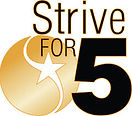
Chapter 43
Global Ecology and Conservation Biology
Learning Objectives:
1.C.1: Speciation and extinction have occurred throughout the Earth's history.
2.C.2: Organisms respond to changes in their external environments.
4.A.5: Communities are composed of populations of organisms that interact in complex ways.
4.A.6: Interactions among living systems and with their environment result in the movement of matter and energy.
4.B.3: Interactions between and within populations influence patterns of species distribution and abundance.
4.C.3: The level of variation in a population affects population dynamics.
4.C.4: The diversity of species within an ecosystem may influence the stability of the ecosystem.
Watch video.
Take notes on 2B.
Project Review: University of Washington
Choose one from bulleted list below.
Summarize on Notes 3B.
Bozeman Science: Biodiversity

How does the atmospheric CO2 concentration change during a year
from decade to decade?
Textbook page 922--Complete on Notes 4B.

Test Your Understanding
Textbook page 931, #1-7
Complete on Notes 5B.
As you complete test, mark questions with:
a star (I know this),
a checkmark (I might know this),
or a question mark (I don't know, I guessed).
Self-correct using answers in back of textbook.
Write validations/corrections for checkmarks, question marks, and missed stars (oops).
Scientific Skills Exercise:
Graphing Cyclic Data

Illustrative
x
a
m
p
l
e
s
Loss of genetic diversity (crops)
Extinction rates
Deforestation
Endangerment
Habitat fragmentation
Introduced species (Kudzu)
Prairie chickens
Algal blooms
Biological magnification
Flowering time
Global climate change
Sustainability


Log Entry 3
This land IS your land
What shall become of it?
"We have not inherited the Earth from our Fathers, we are borrowing it from our Children."
--Ancient Indian Proverb
No lab for Chapter 43--we're going "dark" to make sure Summer cAMP assignments are well under way.

FRQ Log
A: Why are certain animal species linked to certain plant communities?
B: Give an example of an environmental gradient that you have observed yourself.
What factors change along it and how does this impact species present?
C: Discuss parallels between components of species diversity and components of
cultural and ethnic diversity in human species.
D: Describe factors that contribute to high species richness of tropical rainforests and
coral reefs.
E: If you were working as a restoration ecologist to restore a certain community, what
measures might you use to assess whether your efforts were successful?
F: Is the greenhouse effect something that occurs without humans, or is it solely
created by humans?
G: Why is global warming associated with a greater intensity of storms?
H: How might changes in the seasonal timing of some events (such as the onset of
warm weather at the end of winter) affect mutualistic interactions between plants
and insect pollinators?

I can't see the forest for the trees...
Basic Biology Text:
Chapter 6
At a minimum, understand:
Human activities threaten Earth's biodiversity. Our appreciation of life guides the fields of biology today. We decipher genetic codes, we use fossils and DNA to chronicle timelines of evolution, we classify and protect millions of species, we use nature responsibly and reverently.





